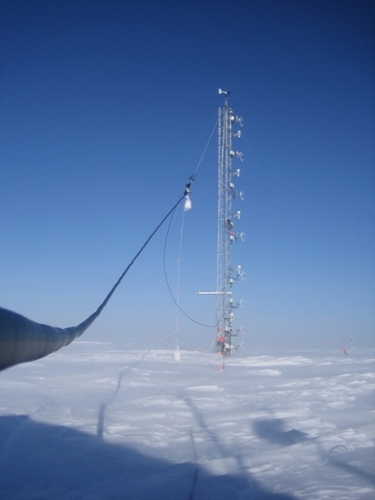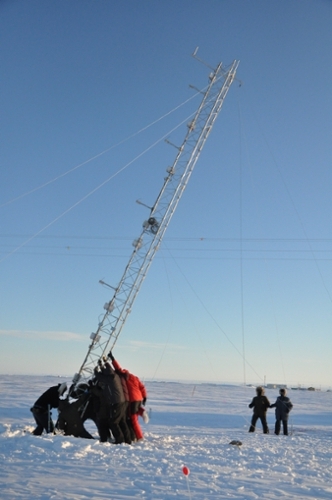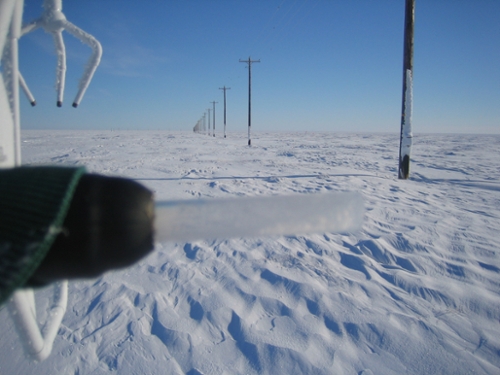Photochemical Halogen and Ozone Experiment
Mass Exchange in the Lower Troposphere (PHOX:MELT) 2016
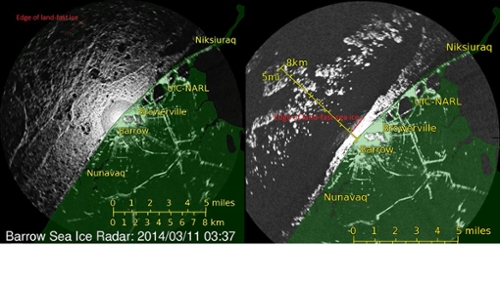
A comparison of the land fast sea ice extent in March 2014 and March 2012.
You can read about our adventures from February 21th, 2016 – May 23rd, 2016 on graduate student Angela Raso’s Blog.
Oxidation pathways in the Arctic springtime atmosphere are often controlled by halogen chemistry. Molecular halogens are produced from the sunlit surface snowpack above coastal tundra, as well as sea ice. However, the magnitude of molecular halogen production from coastal snowpacks is not well constrained, and little is known about the extent of near-surface vertical mixing and the importance of recycling on aerosols. This project is using eddy covariance method to estimate surface fluxes from coastal snow to constrain bromine and chlorine production rates. A 12 m tower was used to examine near surface micrometeorological mixing conditions. The tower also facilitated vertical profiles of reactive gasses and aerosols under varying conditions. This project produced an extremely rich data set, ranging from the nearly always dark late winter, to snow melt in late Spring. Working conditions included 30 mph winds, -11 F temperatures, hiding from local wildlife (Polar bear cubs! Rabid foxes!), and multiple power outages.
This project is a collaboration with the micrometeorology group at Penn State and the Pratt Lab at the University of Michigan.
The CIMS inlet line was connected to the tower via a pulley for vertical profiles.
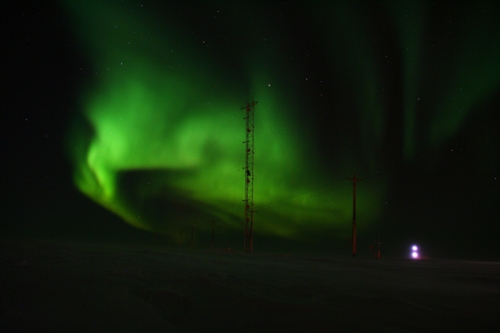
The tower was erected just in time for a spectacular night of activity.
Fourth try is the charm - The 12m tall tower was finally erected with much help, and the expertise of our collaborators from PSU!
The CIMS inlet line and the measurement arms of the sonic anemometer, set up to measure halogen fluxes from the coastal snowpack.
You can see more photos from PHOX:MELT here.

